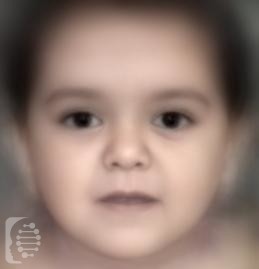What is Laron syndrome?
Laron syndrome is a rare genetic syndrome that occurs when the body is incapable of utilizing growth hormones. As a result, short stature is one of its main symptoms.
The syndrome is not necessarily identified at birth, as affected infants are often born at an average height. Height growth starts to slow usually in childhood and without treatment will continue into adulthood. Treatment for limited height growth involves injections of a growth factor similar to insulin.
Those diagnosed with the syndrome may possibly have a reduced risk of developing cancer and diabetes type 2.
Syndrome Synonyms:
Growth Hormone Insensitivity Syndrome; Growth Hormone Receptor Deficiency; LTD Pituitary Dwarfism
What gene change causes Laron syndrome?
It is caused by changes to the GHR gene. It is inherited in an autosomal recessive pattern.
Autosomal recessive inheritance means an affected individual receives one copy of a mutated gene from each of their parents, giving them two copies of a mutated gene. Parents, who carry only one copy of the gene mutation will not generally show any symptoms but have a 25% chance of passing the copies of the gene mutations onto each of their children.
What are the main symptoms of Laron syndrome?
The main symptom of the syndrome is a short stature with restricted height growth that is progressive, from childhood into adulthood. Short limbs, the arms and legs, are also a common feature.
Unique facial features associated with the syndrome include a protruding forehead, sunken bridge of the nose and a blue sclerae (bluish coloring of the whites of the eyes).
Reduced muscle strength and lower endurance are also symptoms. As are delayed puberty and obesity.
Hypoglycemia, low blood sugar, and its related side effects may be identified in infancy in affected individuals.
Possible clinical traits/features:
Brachydactyly, Severe short stature, Delayed eruption of teeth, Delayed skeletal maturation, Depressed nasal ridge, Abnormal facial shape, Reduced number of teeth, Prematurely aged appearance, Truncal obesity, Delayed menarche, Short long bone, Abnormality of the elbow, Abnormal joint morphology, Aplasia/Hypoplasia involving the nose, Blue sclerae, Abnormality of the voice, Skeletal muscle atrophy, High pitched voice, High forehead, Cognitive impairment, Hypohidrosis, Hypoglycemia, Short toe, Underdeveloped supraorbital ridges, Hypoplasia of penis, Hypertrichosis, Autosomal recessive inheritance, Osteoarthritis, Small face, Microdontia, Micrognathia, Abnormality of metabolism/homeostasis, Abnormal circulating lipid concentration.
How is it diagnosed?
To find out if someone has a diagnosis of Laron syndrome, it is important to have a consultation and evaluation with a clinical genetic specialist. Specialists may also suggest specific genetic testing or other types of tests to help reach a diagnosis. FDNA’s AI technology can help speed up the diagnostic process by analyzing facial features and other health information.

